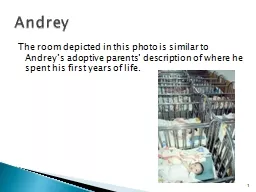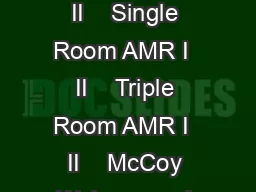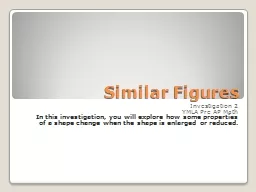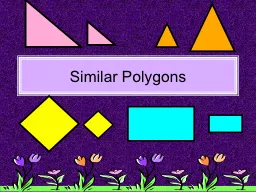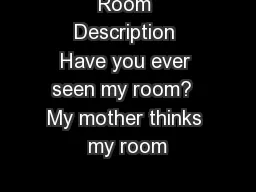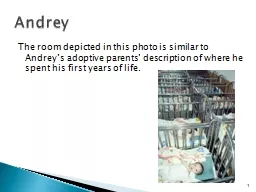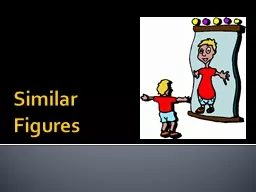PPT-The room depicted in this photo is similar to
Author : jane-oiler | Published Date : 2018-02-17
Andreys adoptive parents description of where he spent his first years of life Andrey 1 Andreys adoptive parents brought him to a specialty mental health clinic
Presentation Embed Code
Download Presentation
Download Presentation The PPT/PDF document "The room depicted in this photo is simil..." is the property of its rightful owner. Permission is granted to download and print the materials on this website for personal, non-commercial use only, and to display it on your personal computer provided you do not modify the materials and that you retain all copyright notices contained in the materials. By downloading content from our website, you accept the terms of this agreement.
The room depicted in this photo is similar to: Transcript
Download Rules Of Document
"The room depicted in this photo is similar to"The content belongs to its owner. You may download and print it for personal use, without modification, and keep all copyright notices. By downloading, you agree to these terms.
Related Documents

